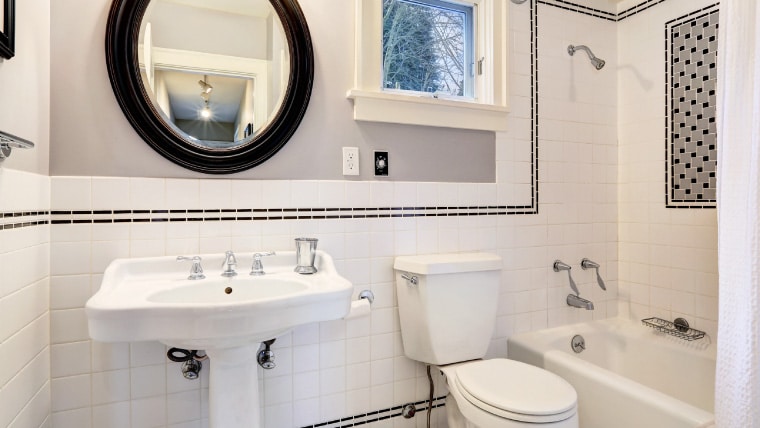
 I get asked this toilet question frequently, and I suspect that those people asking it have already found out the answer. Toilets are made of vitreous china and if the tank bolts are over tightened, the china will crack and can cause a leak.
I get asked this toilet question frequently, and I suspect that those people asking it have already found out the answer. Toilets are made of vitreous china and if the tank bolts are over tightened, the china will crack and can cause a leak.
The leak will come directly from the toilet tank and can be anything from a slow drip to a good flow of water. The big question is how do I know when to stop tightening the bolts?
That is the million dollar question. I think the right answer is probably “experience”, but if you don’t have a lot of experience go slowly. I use the smallest wrench I can find and choke way down on it. That way I am not tempted to continue tightening. When I say “choke down” I mean to place my hand right next to the jaws of the wrench to eliminate any leverage with the wrench. Tighten each bolt equally a little at a time. Then things start to get firm, it is time to be very aware. Get the bolts snug but not tight. Some tanks have built in lugs that will contact the bowl. If yours has these, stop when they contact the bowl.
You can fill the tank and look for leaks at the bolts. If you have a leak at a bolt, you either need to tighten the bolts a little more, or you have already cracked the tank. You are done when the tank doesn’t leak and is firm to the touch.
What Happens if You Over Tighten Toilet Bolts

Tightening toilet bolts is a fickle business. Whether you are working on the tank-to-bowl connection or bowl-to-floor connection, there is that fine line to want to creep up to but not pass.
Toilets are made of vitreous china and if you put too much stress on them they can crack.
So the question of how tight do you tighten bolts becomes how good is good enough. If you continue to tighten toilet bolts, the toilet will crack, so you have to know when to stop. The only problem is that usually only comes with experience.
I would first suggest using a very small wrench. This will make it so you are cognizant of the pressure you are placing on the bolt and nut. If you use a large wrench, you gain leverage on your side and in my opinion are more likely to crack the toilet. So use a small wrench and take incremental turns on it. Tighten it slightly and check for movement of the bowl or tank, whichever you are working on. Also, alternate tightening the opposing sides of the piece you are working on. Whether or not it is a bowl or tank, tighten one side slightly and then the other slightly then test for movement. If you hear a “crack” you will be buying a new piece.
